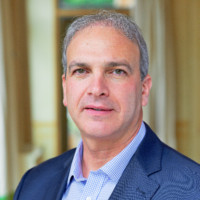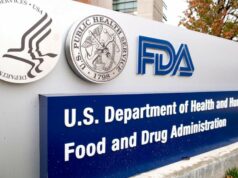
Saniona bryter ny mark för att nå marknad
Saniona, som just nu är aktuella med inlösen av den första av tre utestående teckningsoptioner, närmar sig kliniska fas III-studier med läkemedelskandidaten Tesomet inom två ätstörningsindikationer. Samtidigt gör sig partnern Medix redo att lansera den inlicensierade substansen tesofensine som en ny behandling mot fetma efter en framgångsrik fas III-studie i Mexiko. BioStock kontaktade Sanionas USA-baserade vd Rami Levin, som efter 23 år i branschen nu kommer att använda sin erfarenhet för att locka stora amerikanska bioteknikinvesterare till bolaget.
I januari utsågs Rami Levin utsågs till ny vd för det danska bioteknikföretaget Saniona. Levin, som är baserad i Boston, Massachusetts i USA, har varit aktiv inom läkemedelsindustrin i över 23 år och har haft ett starkt fokus på sällsynta sjukdomar samt sjukdomar i det centrala nervsystemet (CNS). Han kommer närmast från en roll som vd för Sobi Inc., ett amerikanskt dotterbolag till det svenska bolaget som är specialiserade på biologiska läkemedel inom sällsynta sjukdomar.
På Sobi ansvarade Rami Levin för att bygga upp den amerikanska organisationen och leda den genom en framgångsrik tillväxtperiod. Han ledde också arbetet med att lansera Gamifant, den första godkända behandlingen för familjär hemofagocyterande lymfohistiocytos (FHL) och integrationen av teamet bakom Synagis, den enda godkända behandlingen för respiratoriskt syncytialvirus (RSV).
Före sin roll på Sobi hade han ledande affärspositioner på Merck Serono i ett antal länder, såsom USA, Schweiz, Israel och Sverige. Med andra ord är Rami Levin mycket välbekant med den nordiska bioteknikmarknadens ekosystem.
BioStock kontaktade Levin för att få hans syn på bolagets väg till marknad med läkemedelskandidaten Tesomet och för att få veta mer om de viktigaste aktiviteterna framöver.

Rami Levin, what are the three most important focus areas for Saniona at the moment?
– The most important focus area right now for Saniona is to ensure we have the financing required to be able to focus on the three main company goals:
- To advance the clinical development of Tesomet in both rare eating disorders: Prader Willi Syndrome and hypothalamic obesity all the way to registration and commercialization.
- To advance the earlier stage molecules: SAN711 and SAN903 into phase 1 clinical trials and beyond
- Build a full-fledged presence in the US, the largest rare disease market in the world.
On April 22nd the company announced positive topline results from the phase II trial with Tesomet in Hypothalamic Obesity (HO). The data concluded that Tesomet is safe and well-tolerated in HO patients and that the treatment led to statistically significant reductions in the key efficacy endpoints, weight loss, waist circumference and glycemic control compared to placebo. Could you elaborate on the importance of these findings, moving forward?
– Patient’s suffering from HO typically do not respond well to lifestyle modification techniques such as diet or exercise and there are currently no drugs approved for this patient population. Although several drugs are used off-label, they maintain limited efficacy because they have not been specifically developed for this patient population.
 – Our findings support the continued development of Tesomet for patients with HO, highlighting that the treatment is safe and well tolerated and provides significant relief for the core symptoms associated with this disorder. The response from the patient community and treating physicians has been very positive. We look forward to communicating our findings to the FDA as we work towards initiating future studies.
– Our findings support the continued development of Tesomet for patients with HO, highlighting that the treatment is safe and well tolerated and provides significant relief for the core symptoms associated with this disorder. The response from the patient community and treating physicians has been very positive. We look forward to communicating our findings to the FDA as we work towards initiating future studies.
You are also evaluating Tesomet as a potential therapy for Prader-Willi syndrome (PWS). Last year, Saniona reported positive phase IIa clinical results in patients with PWS with data providing guidance for the pivotal Phase IIb/III studies. How far along are you in planning the upcoming pivotal phase III study in this indication?
– Saniona is planning to meet with the FDA in Q2 for a pre-IND meeting. In preparation for this meeting Saniona has worked diligently in planning and preparing the robust phase IIb study design, which we intend to discuss with the FDA.
– Following the meeting with the FDA we intend to submit an IND for approval, which is necessary in order to be able to conduct clinical trials in the US. Once approved we will kick off our planned phase IIb trial, which we hope can start before the end of the year.
»Tesomet provides its effect via an established mechanism of action that is relevant to both syndromic and nonsyndromic forms of obesity, providing an avenue to potentially developing the compound across multiple obesity disorders« — Rami Levin, CEO Saniona
The active substance tesofensine has evolved from initially targeting just obesity, to – in the form of Tesomet – being well on its way to the market in both HO and PWS, two serious eating disorders that currently lack treatment options. What is the nature of the competitive landscape in these indications and what would you say differentiates the mechanism of action in tesofensine/Tesomet from its competitors?
– As a result of the amazing patient advocacy work that has been performed in PWS over the past decade, there has been a growing number of companies showing an interest in this disorder. Just this year there have been three Phase III clinical trials of various compounds in PWS. Although not all will be successful (one actually failed just recently), we are encouraged by this interest as it supports the high unmet need in this patient population and the urgency for developing multiple treatment options.
– Hypothalamic obesity is less well known than PWS, but growing support from patient organizations is increasing public awareness and generating interest from industry. Saniona is the only company that we are aware of that is actively pursuing the development of a novel treatment for HO and we are excited to continue our progression towards market approval. Tesomet provides its effect via an established mechanism of action that is relevant to both syndromic and nonsyndromic forms of obesity, providing an avenue to potentially developing the compound across multiple obesity disorders.
The roadmap ahead includes a so-called End of phase-meeting with FDA regarding upcoming trials in both HO and PWS. Can you tell us more about what these meetings usually entail?
– The end of phase meetings are intended to review the results of the trials with the FDA and receive advice and guidance from them on future clinical development plans for the product.
– In Saniona’s case these meetings will also serve as pre-IND meetings. An IND approval from the FDA is required to be able to conduct clinical trials in the US. As none of the Tesomet trials so far been conducted in the US an IND was not required. However, moving forward all of our clinical trials will be conducted in the US, and therefore will require an IND. These meetings therefore will help shape the IND submission to the FDA.
»We are specifically grateful for the trailblazing work that the Raymond A. Wood Foundation is doing in advocating for hypothalamic and pituitary brain tumor survivors, many of whom develop HO«
Following your positive data from the HO study, you have had a lot of interest from patient organizations in the US who are of course hopeful and eager to see a potential new therapy on the market as soon as possible. How important is it to get the support from these organizations, before entering the market?
– It is critically important for any company working in the rare disease space to be engaged with patient organizations. These organizations are a voice for the patients and we always strive to listen to this voice to ensure studies are designed to address patient needs. Rare disease drug development requires input from multiple stakeholders, and we see the patient organizations as being paramount to our success.
 – We are committed to building awareness for HO and to improving the understanding of the mechanism of disease in the hope that new treatment options can be made available. We are specifically grateful for the trailblazing work that the Raymond A. Wood Foundation is doing in advocating for hypothalamic and pituitary brain tumor survivors, many of whom develop HO.
– We are committed to building awareness for HO and to improving the understanding of the mechanism of disease in the hope that new treatment options can be made available. We are specifically grateful for the trailblazing work that the Raymond A. Wood Foundation is doing in advocating for hypothalamic and pituitary brain tumor survivors, many of whom develop HO.
»In some cases we need to define key and meaningful endpoints in our clinical trials, be creative in recruiting patients into those trials or develop and define metrics to measure success, which never existed before«
From a regulatory and a commercial perspective, since there are currently no viable therapeutic drug alternatives out there for HO or PWS patients, what “success level” in terms of clinical data is required to make a powerful entry on the market?
– Being a company focused on rare diseases, where usually no other treatments are available on the market often means that we need to trailblaze our way to product approval. This means that in some cases we need to define key and meaningful endpoints in our clinical trials, be creative in recruiting patients into those trials or develop and define metrics to measure success, which never existed before.
– Saniona is committed to the highest quality science. In our pursuit to bring novel treatments to the market for patients with the highest unmet needs, we will be working closely with the input from the patient organizations and the FDA to guide us.
Saniona has a broad candidate portfolio in addition to the eating disorder projects. Some of your projects are already partnered and even close to commercialization, and some are earlier stage assets which you aim to develop internally. Could you very briefly guide us through the pipeline, and give a short comment on the commercial strategy for each asset?
– Our proprietary rare disease pipeline is our main value driver. Tesomet is our most advanced treatment in development and is now approaching late stage registration studies in both PWS and HO. Saniona intends to continue developing Tesomet up to registration and then commercialize it ourselves.
– Saniona also has two earlier stage proprietary programs: SAN711 and SAN903. Both molecules represent very innovative and potentially game changing new treatment principles in severe, rare itching disorders and inflammatory disorders, respectively. Here as well, we intend to develop both of these molecules and ultimately commercialize them ourselves.
– Apart from our proprietary products we also have strategic partnerships and out licensing agreements on some of the molecules we discovered for larger indications. The most advanced treatment, which is closest to approval is tesofensine for treatment of obesity. We have out licensed tesofensine to Medix in Mexico and Argentina. Tesofensine is now in registration phase in Mexico with expected approval and launch later this year. Once approved and launched, Saniona will start to receive royalties on sales.
Just over a month ago, the ongoing collaboration that Saniona has with Boehringer Ingelheim resulted in a second research deal, what can you tell us about that?
 – We have been working successfully with Boehringer Ingelheim for several years focusing on schizophrenia. Boehringer Ingelheim has taken one of Saniona’s ion channel programs covering GABAa5 into preclinical development. The new research collaboration between Saniona and Boehringer Ingelheim covers an entirely new and innovative ion channel target with a strong link to schizophrenia. The new drug class is intended to treat negative and cognitive symptoms of schizophrenia, which are often the most critical obstacles for patients to engage in social life.
– We have been working successfully with Boehringer Ingelheim for several years focusing on schizophrenia. Boehringer Ingelheim has taken one of Saniona’s ion channel programs covering GABAa5 into preclinical development. The new research collaboration between Saniona and Boehringer Ingelheim covers an entirely new and innovative ion channel target with a strong link to schizophrenia. The new drug class is intended to treat negative and cognitive symptoms of schizophrenia, which are often the most critical obstacles for patients to engage in social life.
For a company with a broad pipeline, especially in late clinical stage, financing the ongoing development is usually a high stakes game. In January, Saniona completed a private placement of SEK 25 million and proposed a financing solution which could provide up to SEK 158 million. It is actually a combination of the directed issue, a loan of SEK 25 million and a rights issue of three series of warrants at a strike price of SEK 25–30 per share. Can you tell us more about this financing model and how far it will get you, provided that the warrants are executed?
– We are entering an exciting phase for the company, with both an expansion of our presence in the important US market, as well as meaningful progress on our drug development programs. The net proceeds from the financing solution you describe will enable Saniona to focus our efforts on three main areas:
- Further advance the development of our key asset Tesomet for the two eating disorders: Prader-Willi syndrome and Hypothalamic Obesity. It will allow us to initiate the phase IIb/III clinical trial in Prader-Willi syndrome before the end of the year and the phase IIb/III clinical trial in hypothalamic obesity in Q1 2021.
- Advance our earlier pipeline products including SAN711 and SAN903 into phase 1 clinical trials and beyond.
- As we are now also entering a new phase for the company, transforming Saniona into a global, fully integrated biopharmaceutical, with a strong presence in the US, the largest rare disease market in the world.
»There is no treatment available for either Prader Willi syndrome or hypothalamic obesity, so bringing Tesomet to the market and making it available to these patients who desperately need it is critically important to us«
In conclusion, if we take a quick look into the crystal ball, where would you like to see Saniona in 12 months from now?
– In 12 months from now I would like to see Saniona as a well-funded company, allowing us to focus our efforts on advancing on all three main company goals. There is no treatment available for either Prader Willi syndrome or hypothalamic obesity, so bringing Tesomet to the market and making it available to these patients who desperately need it is critically important to us.
Watch BioStock’s latest video interview with Rami Levin
“The real growth will come from our proprietary projects” (May 5, 2020)

Click here for more information on the exercise of warrants of series TO 1.



